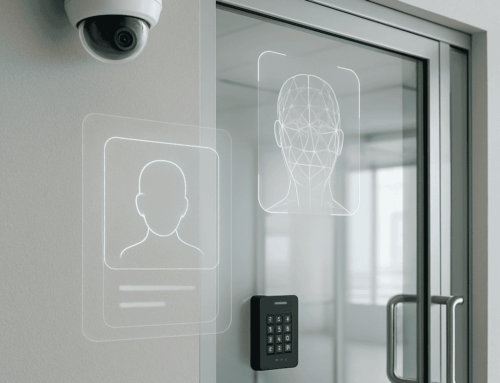DAS and 5G: The Future Of Networks

Imagine the modern office; Employees sitting in different meeting rooms or at workspaces working on their laptops with their smartphones sitting just to the side. From calls to emails, the smartphone is increasingly becoming a critical part of how business gets done.
But this technology depends on another piece of technology – the cellular network. Without it, or with a poor quality network, we find ourselves disconnected from the larger world.
Many large commercial buildings suffer from “dead zones” caused by multiple walls interfering with cellular signals. Fortunately, there is a solution.
What is a cellular network?
Let’s level set by understanding how cellular networks work. A cellular network is a communication network that is distributed by “cells.” You probably know cells more commonly as cell towers. The cells transmit radio signals to the devices within their radius. Signal strength is weakened the further away you are from the cell or the more obstacles between the device and the cell.
The more cells, the cell’s power, or the type of frequency all impact how strong of a signal you will receive. This is where we see one of the key difference between 4G and 5G frequencies.
Isn’t 5G just like 4G LTE but better?
Yes and no. Each generation of cellular technology is based on a robust standard laid out by the International Telecommunication Union and represents a non-backward-compatible leap forward. Roughly speaking, 4G offered a 10X speed increase over the prior 3G networks. 5G promises another 100X increase in speed compared to 4G LTE — that’s huge!
However, 5G technology requires tradeoffs to achieve such massive gains — the shorter, higher frequency wavelengths of 5G are susceptible to interference from buildings, and even trees. And where 4G signals are capable of transmitting successfully up to 10 miles, 5G signals won’t travel much beyond 1,000 feet with acceptable integrity.
What is a DAS Network?
DAS stands for Distributed Antenna System. It is a series of antennas dispersed in an area but all connected to a common source. This allows a signal, like 5G, to be piped into areas more efficiently.
The Importance Of Distributed Antenna Systems
People expect the convenience of making a cell phone call from anywhere, anytime, including from high up in a skyscraper or in the bowels of a parking deck. The use of distributed antenna systems (DAS) first made this possible with 4G technology, even though 4G signals could pass through concrete and walls reasonably well (at least compared to 5G).
Now, with 5G, DAS will be absolutely critical for the network to function at all. Remarkably, this isn’t as true for open-air venues such as sports stadiums where 4G coverage can buckle from too many devices using the network. 5G can support far more devices at much faster speeds but requires a clear line of sight from the transceiver tower to the device.
Office buildings, apartment complexes, hospitals, colleges, and other buildings where people normally use their smartphones will need to embrace DAS technology if they intend to meet basic expectations, let alone capitalize on the full potential that 5G holds.
Active DAS (as opposed to passive DAS) is the preferred method to propagate a cell signal throughout a building. Active DAS works best with an off-air signal source that can be distributed throughout the network. It is possible for a DAS to capture the signal from a nearby cell tower or small cell, this approach lacks doesn’t perform as well as using an off-air signal.
Cost Of DAS
Estimating the cost of installing a DAS system depends on several variables. How much space needs to be covered, how many antennas will be required to cover said space, and how many carriers does the network need to support are all factors. Equipment type and installation costs also impact the overall project estimate.
A general rule is that it can cost between $2 and $4 per square foot to deploy a single-carrier distributed antenna system. Multi-carrier DAS systems range between $5 and $10 per square foot.
Futureproofing
5G technology is separated into three tiers with different frequencies and performance characteristics associated with each tier. And even though it’s easy to think of 5G as a single technology, it’s actually a protocol that will evolve over time. The various “flavors” of 5G should be deployed where they can best meet the task at hand.
You need to implement a DAS that will let you take advantage of all the benefits that 5G has to offer. And the best way to do that is by partnering with a vendor who understands the nuances of this technology and how to integrate it into your building or organization.
About i.e.Smart Systems
i.e.Smart Systems is a Houston, TX based technology integration partner that specializes in design and installation of audio/visual technology and structured cabling. For more than three decades, our team of in-house experts has partnered with business owners, architectural firms, general contractors, construction managers, real estate developers, and designers in the Houston market, to deliver reliable, scalable solutions that align with their unique goals.




